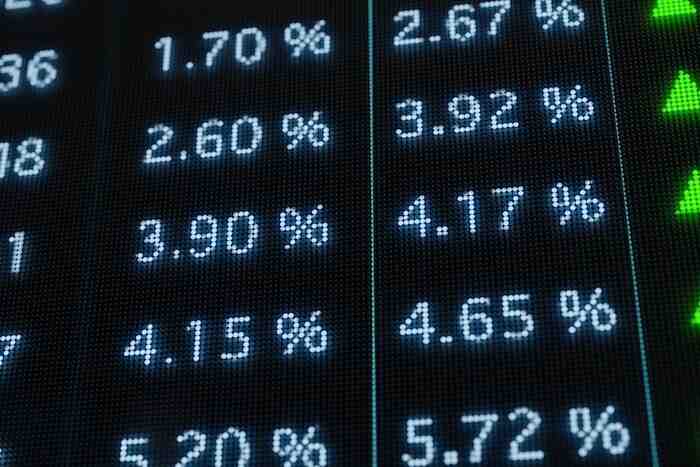My No. 1 Indicator to Use in Volatile Markets
Alpesh Patel|September 30, 2022
In a volatile market, it’s not just about making money… it’s also about keeping your money.
So in today’s special edition of Stock of the Week, I’d like to share the No. 1 indicator that’s been critical to my success.
It has saved me a fortune this year alone.
When you use it, you’ll know when to get in… and when to stay out.
I explain how it works and what it’s telling us about the market right now in this week’s video.
Click on the image below to watch it.
Transcript
Hi, everyone. I’ve got an educational video for you, and it’s a really good one.
I’m going to share one of my big favorite indicators, which has saved me a fortune this year alone.
Remember, success in the markets is about not just making money but also keeping it. So the profits from last year, the year before and the year before that – we’ve had a few good years, remember – well, it’s about keeping that money. You don’t want to give it away.
And the indicator that I’m going to reveal to you in this short, educational video has been critical to my success.
First things first, it’s something which I discuss in my forthcoming book, which the Financial Times is going to be publishing. That’s a long way into the future. It’s going to be at least 2023, so don’t wait for the book. I’m going to give you the exclusive insight right here.
This is something I’ve been using for over 20 years to make sure I know not just when to get in but also, more importantly, when to stay out. And that’s been the story of the markets this year: staying out.
It’s about measuring momentum. You know the market’s going to go higher or lower, but how do you measure that momentum?
Well, one way to do it is to measure how close to the high the price closes in any period. Is it closing near the high? And the theory around that is if it’s closing near the high in any given period, then the next period it should – in all probability, but not certainly – move higher.
How are you supposed to do that? With big, massive glasses or a magnifying glass?
There are many mathematical indicators which can be put onto charts which explain that. I know it sounds a bit complicated. Is the price making higher lows? Is it closing near its high? Is it making higher highs?
All of that suggests positive momentum and an upward trend. And the reverse is true for a downward trend, which is very much more important in today’s market.
How might that look? This is the S&P 500. And if you can see at the bottom down here, you will see we’ve drawn it from October all the way up. Actually, I’ve drawn it all up to July two years from now. But as you can see, this is us. We’re just about to approach October. That’s us, and this is where it is.
What do we see on the screen? Well, that’s the price of the S&P, and you can see pretty much at the start of the year and ever since it’s been moving lower. You know that already. In fact, it’s dropped about 23%, 25% from its height. You know all of this.
What’s different? Well, this top indicator, these bars that you see in the yellow and blue, that’s what’s called the monthly MACD, or moving average convergence divergence. Again, it sounds complicated, but bear with me. Each one of these bars on the price is a week. It’s how the price has moved each week.
What you see here is one measure of momentum. This is based on each monthly bar, this is based on each weekly bar. I’ll clear these charts so you can see things a bit more clearly.
Okay, so what you see is, this is the monthly MACD. All of this, this is the weekly, this is the stochastic, another measure of momentum, and that’s the weekly. And then this, you can see it here, these two lines, red and blue, are the monthly. It all sounds very complicated. Again, I promise you, let me simplify it for you.
When I see it, the most important indicator for me is this, it is the monthly MACD. It is this. When I see this starting to move down, I know I’ve got a bit of a warning signal.
And there are two parts to it. There’s, as you can see, the blue line and the orange line, and they’re just mathematical operations to see if the price is making lower highs and lower lows and if it is closing near the low – the things that I just showed you. But it puts it in a graphical as opposed to a mathematical way.
And around here it started moving a bit lower, and as you can see, at the start of the year, the price moved a bit lower and I thought to myself, “Let’s just wait,” okay. Then it started gathering steam, which told me to wait longer.
So what does it do? It tells you when to wait if it’s starting to move lower. Another important thing it does is it tells you whenever rallies may well not likely last because it was still moving lower. So it told me that whatever rally we got was a trap and is likely to move lower. So that’s the other thing, because it kept moving lower. Again, let me just clean the image for you. So that’s what it did there.
Now, the other important factor with that is, as it accelerates, look at that, it’s almost like a rocket or a stone falling. As it accelerates down there, it tells me with even more certainty that it’s going to take an awful lot for some kind of reversal.
And look at this, even that was a big bear trap. And we’ve seen it was. So a lot of people, they got in here, they got in too soon, and it was a bear trap. What gave it away? It was this.
So you might say, “Wait a minute, what are all these other things?” Well, the weekly MACD tends to be a bit more responsive, but it tends to be outweighed by the force by which the monthly is falling. Similarly, the stochastic on the monthly tends to be a bit more responsive than the monthly MACD. But the most important to me is this one, because it kept me out generally and told me to wait there, and now we’re going down.
Now, you might say, “Okay, we’re going down. Surely, Alpesh, this is now flattening.” Well, we’ll see. It only tells me to wait. And you might say, “Well, wait a minute, the stochastic’s near the bottom. Surely when it hits the bottom, it goes up and the prices will move up. Surely this is near the bottom and will likely move.”
You’re absolutely right, we may well get a few bounces. But we’ll make a decision later on.
All I’m saying is this gives me an early warning system, then the force tells me when there’s going be bear traps and it tells me when to be cautious. A bit like a traffic light system.
Now, you might also say, “Wait a minute, what are these channels in these bars?” That’ll come up in future videos. “How did you make these assessments?” That’ll come up in future education. Stick with me.
But for now, I just wanted to show you one of the most important indicators for me, this monthly MACD, and show you the way in which I interpret it.
Thank you very much.





